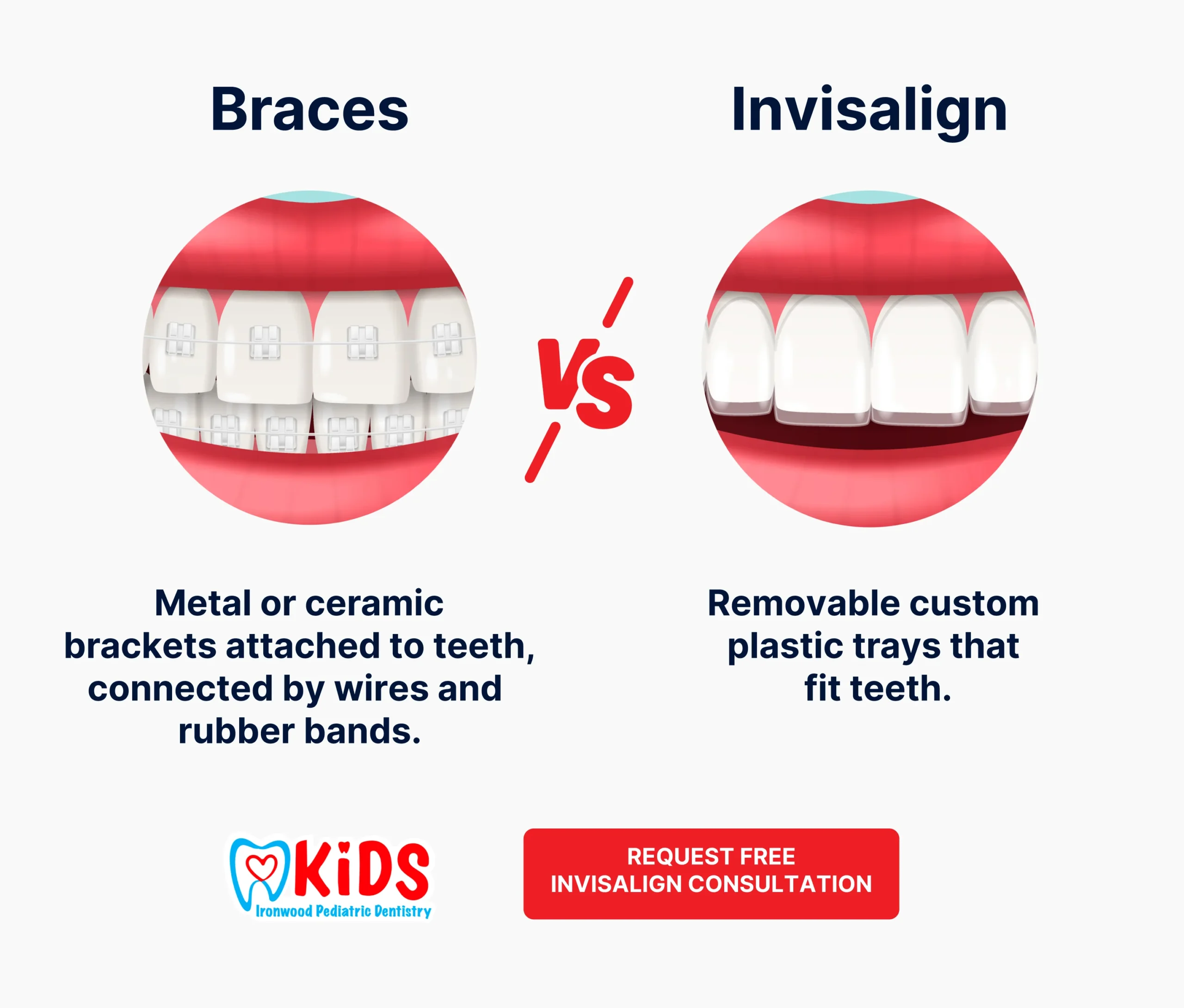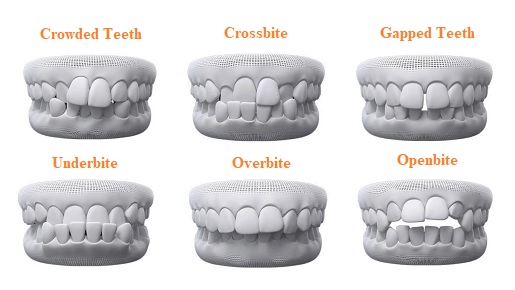Invisalign for Teenagers: A Modern Solution to Straightening Young Smiles
Invisalign for Teenagers: A Modern Solution to Straightening Young Smiles
Blog Article
Invisalign vs. Standard Braces: Which Option Is Right for You?
When taking into consideration orthodontic therapy, the selection in between Invisalign and standard braces offers a number of essential variables that warrant careful evaluation. Invisalign supplies a very discreet alternative with removable aligners, while standard dental braces provide a more noticeable yet effective service for extreme imbalance.
Introduction of Therapy Choices

On the other hand, traditional dental braces consist of steel braces and wires that are adhered to the teeth. This approach uses constant pressure in time to achieve positioning. While reliable for complex orthodontic concerns, traditional dental braces require regular check outs for adjustments and can posture challenges in maintaining dental hygiene because of the problem of cleaning about cables and brackets.
Both options have their qualities, and the selection frequently pivots on particular oral conditions, lifestyle choices, and individual conformity. Eventually, getting in touch with an orthodontic specialist is crucial for identifying the most appropriate treatment strategy tailored to private demands. Understanding the nuances of each alternative can significantly affect the overall success of orthodontic treatment.
Aesthetic Considerations
A significant variable affecting the option between Invisalign and standard braces is the visual charm each treatment provides. Invisalign aligners are crafted from clear plastic, making them essentially unnoticeable when put on.
On the other hand, traditional braces contain metal brackets and cables, which can be extra recognizable. While improvements in orthodontic technology have actually led to the growth of smaller sized brackets and tinted elastics, typical dental braces still keep a more obvious profile. For some people, the visibility of dental braces might deter them from looking for needed therapy.
Eventually, the selection between Invisalign and traditional braces may pivot on personal preferences relating to looks. Clients that focus on discretion frequently lean towards Invisalign, while those that are less worried concerning visibility may opt for typical dental braces. Comprehending the visual ramifications of each option is important for making an informed decision that lines up with one's way of living and preferences.
Comfort and Convenience

In terms of comfort, Invisalign aligners are removable, allowing individuals to enjoy their favored foods without limitation and keep optimum oral health. Brushing and flossing are streamlined, as the aligners can be secured throughout these routines, whereas typical braces call for cautious maneuvering around cords visit this page and braces.
In comparison, traditional braces demand normal changes, making them much less hassle-free for those with busy schedules. In general, the comfort and convenience of Invisalign make it an appealing option for numerous people seeking orthodontic treatment.
Treatment Duration and Effectiveness
While both Invisalign and conventional dental braces are efficient in correcting dental misalignments, the period of treatment can differ dramatically between both options. Generally, Invisalign treatment can take anywhere from 12 to 18 months, depending on the complexity of the instance. The clear aligners work by slowly moving teeth right into their desired placements, and normal follow-ups with an orthodontist help make sure progress continues to be on track.
On the other hand, typical braces commonly call for a longer dedication, normally ranging from 18 months to 3 years. This results from their fixed nature and using brackets and wires, which can be a lot more reliable for extreme imbalances and complicated instances (Invisalign). The therapy performance of traditional dental braces is well-documented, as they permit accurate modifications and better control over tooth movement
Ultimately, the option between Invisalign and traditional dental braces may depend upon both the awaited treatment period and the particular dental concerns handy. Consulting with an orthodontist is important, as they can supply customized suggestions based upon individual demands, making sure the picked technique straightens with desired end results and timeframes.
Cost Comparison and Insurance Coverage Options
Cost plays a substantial function in the decision-making process for individuals considering orthodontic therapy, whether opting for Invisalign or traditional dental braces. On average, the cost of Invisalign varieties from $3,000 to $8,000, while traditional braces usually set you back in between $2,000 and $6,000. Elements affecting these costs include the intricacy of the situation, the duration of therapy, and geographical area.
Insurance policy coverage can substantially impact out-of-pocket costs. Several More about the author oral insurance coverage strategies provide partial coverage for orthodontic treatments, however the specifics can vary widely. It is important for clients to evaluate their insurance plan to determine the degree of insurance coverage for either alternative. Usually, standard braces may be extra often covered by insurance policy strategies compared to Invisalign, which some insurance companies categorize as a cosmetic procedure.
Additionally, several orthodontic practices offer versatile settlement strategies, making both treatment options extra available. Clients need to ask about potential financing options and discounts go to this web-site for ahead of time payments. Evaluating the overall cost, consisting of insurance coverage benefits and settlement strategies, is crucial for making an educated choice that lines up with both aesthetic choices and budget plan factors to consider.

Verdict
In summary, the selection in between Invisalign and traditional braces rests on numerous elements, including aesthetic preferences, comfort, treatment duration, and cost. Invisalign provides a very discreet, detachable option that helps with oral hygiene and nutritional adaptability, while standard dental braces may be more ideal for complicated oral concerns and often come with a reduced cost factor. Inevitably, appointment with an orthodontist is important to evaluate individual scenarios and establish the most appropriate therapy alternative for accomplishing optimum oral placement.
When taking into consideration orthodontic treatment, the selection between Invisalign and typical dental braces offers a number of important variables that warrant cautious assessment.Comparing Invisalign and traditional braces exposes unique treatment choices for orthodontic adjustment.While both Invisalign and conventional braces are efficient in dealing with dental imbalances, the duration of treatment can vary dramatically between the two alternatives.Cost plays a significant role in the decision-making process for people taking into consideration orthodontic therapy, whether choosing for Invisalign or typical dental braces.In recap, the option between Invisalign and typical braces pivots on several aspects, including visual choices, comfort, therapy duration, and cost.
Report this page